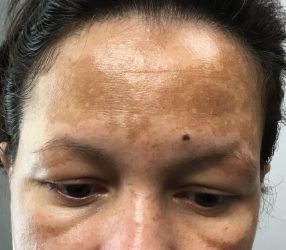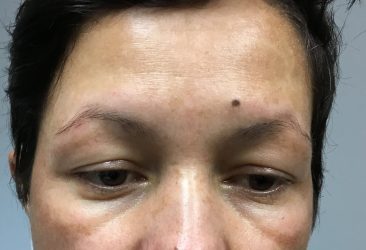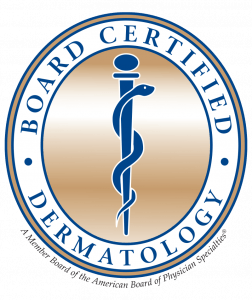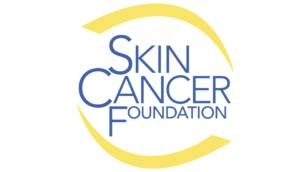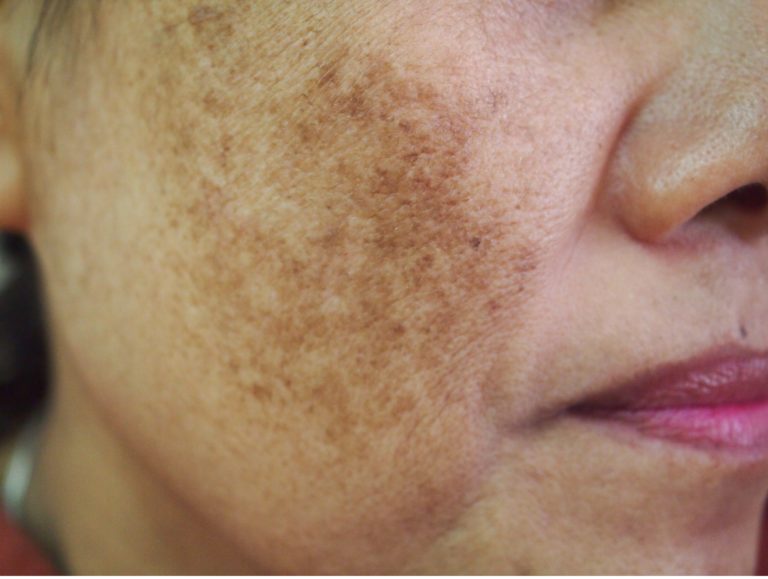
What is Melasma?
Melasma is a common cause of excessive pigmentation (brown patches) on the face. It is most prevalent in females with skin of color as well as those from certain ethnicities including Hispanic, Asian, African and Middle Eastern descent. Melasma is an acquired condition and presents as symmetric hyperpigmented patches, with irregular outlines, most commonly on the central forehead, cheeks and the upper lip. Many people find the discoloration psychologically distressing. Unfortunately, it is a chronic condition without cure; however, treatments are available to reduce pigmentation and greatly improve the appearance.
What causes melasma?
Multiple factors cause and contribute to the pigmentation of melasma. Ultraviolet light (i.e., sunlight) is one of the most important factors. UV light stimulates melanocyte stimulating hormone which causes pigment cells to produce more pigment which darkens the skin. Sometimes this pigmentation drops down below the surface producing a gray color to the skin. Ultraviolet light may also exert its effects on blood vessels and estrogen receptors in the skin. Recent evidence suggests that even visible light, from lamps or overhead lighting, may also worsen melasma.
Hormones also play a role, and many times women may develop melasma during pregnancy, which is why it is also known as “the mask of pregnancy.” Sometimes, but not always, melasma fades after pregnancy. Those women who take oral contraceptive pills (especially with prolonged use) may also be prone to developing melasma. Genetics also play a role, especially if there is family history.
What treatments are available for melasma?
The first step in treatment of melasma is protection from direct sunlight (UVA and UVB) through sunscreen and hats.
Photoprotection alone can improve melasma by about 25%. Sunscreens with iron oxide (at least 3%) add additional benefit as they block visible light. Zinc oxide containing sunscreens provide UVA and UVB protection. The addition of iron oxide will also block visible light. Most preparations with iron oxide are tinted. Examples of those products that we recommend include Elta MD elements tinted (sold at Craig Singer MD Dermatology), Avene Mineral High Protection Tinted Compact SPF 50, and Femme Couture Get Corrected CC Creme Foundation Natural Buff.
Sunscreens need to be applied at least twice a day, both in the morning and again in the early afternoon. Computers and smart phones do not cause melasma.
Hydroquinone is the prototypical “bleaching cream,” although in reality, it does not actually bleach the skin. Instead, it prevents pigment synthesis by inhibiting the enzyme tyrosinase in melanin producing cells. Hydroquinone is most effective when combined with a topical steroid and a retinoid, which is commercially available as a prescription.
Craig Singer MD Dermatology sells a triple therapy bleaching cream that combines all three active ingredients with the additional benefit of the antioxidant vitamin C and niacinamide. We have found that most patients respond favorably to this combination therapy. Initial response is usually seen in the first 4 to 6 weeks after initiation of triple therapy bleaching cream and may continue to improve over the next several months. Although irritation is sometimes seen in the beginning, most patients can tolerate daily use.
Our triple therapy bleaching cream has a milder strength a retinoid which improves tolerability.
In the past, hydroquinone was restricted to three months. However, we have recently noted that hydroquinone at standard concentrations may be used continuously for up to six months as long as the patient is being monitored by a physician.
Other skin lightening agents may improve the appearance of melasma.
Topical agents such as kojic acid, arbutin, and Vitamin C are available in cosmeceutical products (sold as skin brightening pads Craig Singer MD Dermatology) and are safe for long-term use. Tranexamic acid, commercially sold topically as Lytera through CSD is a newer topical agent with skin lightening properties. Azaleic acid (Finacea TM) is available as a prescription which may also be of benefit and is felt to be relatively safe during pregnancy.
The use of glycolic acid pads 10% or 20% (sold at Craig Singer MD Dermatology) helps exfoliate the skin and disperse pigmentation thereby lightening the overall skin complexion.
Heliocare™ is an oral antioxidant derived from the fern plant. It has several uses in dermatology including treatment for melasma. Heliocare™ provides a sun protection factor of 4 (mildly protective against UV) but it also protects the skin against visible light which is a newly recognize trigger of melasma. Recall that traditional sunscreens do not block visible light unless they contain iron oxide.
A well-done study examined patients with melasma who were being treated with hydroquinone and sunscreen. Half of these patients were also given Heliocare™ 480 mg a day and half were given placebo. The Heliocare™ treated side showed significant improvement against the untreated side.
Therefore, 480 mg a day of hydroquinone is a great adjunctive therapy for melasma. Side effects are rare and mild.
Tranexamic acid may also be taken orally for the treatment of melasma. Tranexamic acid is antifribrinolytic (i.e., it enhances clotting) and it is FDA approved for heavy menstrual cycles. It is not FDA approved for melasma, and therefore it is used off label when prescribed by a dermatologist. However, tranexamic acid has been shown to be an effective oral therapy for stubborn cases of melasma. Tranexamic acid works by inhibiting plasmin which reduces growth and pigment production of melanocytes.
Side effects are usually mild and include GI upset, headache, muscle aches, and decreased menstrual blood flow. These occur in about 5 to 10 % of patients. In a large study of 2000 subjects, one patient developed a deep venous thrombosis (i.e., blood clot) while taking tranexamic acid however it was discovered that the patient also had protein C and S deficiency which is an underlying predisposing factor for blood clots.
Most patients have rebound hyperpigmentation when stopping oral tranexamic acid and therefore need maintenance therapy.
The typical treatment course is for three months and is dosed at 325 mg twice daily. It comes as a 650 mg tablet and you will need to use a pill cutter to chop it in half. As tranexamic acid has a 12-hour half-life it must be dosed twice daily.
Chemical peels are an adjunctive treatment for melasma, and they may enhance the performance of topical bleaching creams. Superficial chemical peels are typically for melasma including glycolic acid, salicylic acid and Jessner peels.
Your skin must be primed for 3-4 weeks with a bleaching cream before the peel. All retinoids (including triple therapy bleaching cream) must be stopped for 5 days before the peel.

